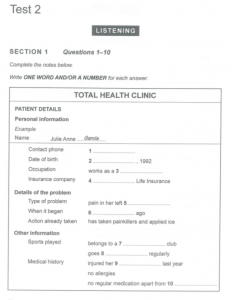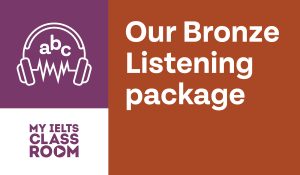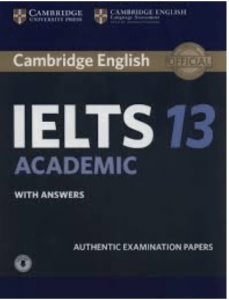
Introduction to IELTS Listening
Welcome to the third lesson in our IELTS 101 series – an introduction to IELTS listening. I think that listening is usually the easiest of the four tests, but it can still definitely be very tricky if you don’t prepare well. As usual, Nick and I start the episode by giving you some basic facts about the IELTS listening test, such as the types of conversation that you will hear in each part and the types of question you will have to tackle.
Then, we will go on to chat about some more complex aspects of listening such as the importance of being able to understand different accents (with Nick doing some fantastic impressions) and how you can follow conversations with more than two speakers. If you are just starting your IELTS journey, then you can find out EVERYTHING you need to know about listening in this episode (plus you can practice your listening at the the same time!!!)
Below, you can find a summary of the episode, which includes all of the links to useful materials and the times of each part of the discussion (so you can go directly to the part you want to listen to).
Subscribe to My IELTS Classroom podcast on Apple podcasts here
Subscribe to My IELTS Classroom on Google podcasts here
Podcast Summary: Introduction to IELTS Listening
00:00 – 04:18 Introduction to the episode
04:19 – 05:52 Basic facts about the IELTS listening test.
- The listening test is the same for General training and Academic students.
- It will be the first test that you take on your exam day.
- The test lasts between 30 and 40 minutes and is divided into 4 parts. Each part has 10 questions.
- You will hear the tape script ONCE and you should answer the questions while you listen.
- You will have 30 seconds before each part to read the questions and 30 seconds at the end of each part to check your answers.
- In the first three parts, you will also have a 30 second break in the middle of the tape-script to read ahead. However, there is no extra break in Part 4.
- In the paper-based test, you will have 10 minutes at the end of the test to transfer your answers from the question booklet to the answer sheet. You must use a pencil to do this.
- In the computer test you will only have 2 minutes to check your answers (but remember that you have already directly entered most of the questions in the CBT, and so will only need to check the spelling of a few items in this time.
05:52 – 10:54 What types of questions will I have to answer in the IELTS listening exam?
You will have to answer a range of question types in your test. These include:
- completing information (i.e. you will need to complete notes, summary, or a table)
- multiple choice questions (there are always 3 choices)
- short answer questions (i.e. questions that start with words like when, why, who or how)
- labelling a diagram, flow chart, or map
We discuss each type of question in this episode, but the best way that you can understand what will happen in the test is to do one! The Cambridge IELTS books are the best resource for test takers as they are genuine past exam papers i.e. the questions are exactly the same level as those you will face in the test. If you want to know more about the Cambridge books (in particular which book you should start with) and how you can use them to prepare, then you can find out more in this blog post.
10:55 – 14.09: Which skills are being tested in the IELTS listening exam?
While it is important to understand the different types of question that you might be asked (and what techniques you can use for each), it is equally important to understand which skills IELTS is testing using those questions. For example, throughout the test
- some questions see if you can understand the main idea of what people say (usually tested by multiple choice)
- some questions see if you can listen for specific information (usually tested by completing sentences, or short answer, or matching)
- some questions see if you can recognise the opinions and attitude of speakers (usually tested by multiple choice)
- some questions see if you can follow an argument or a description (usually tested by labelling a diagram or completing sentences)
- some questions see if you can understand sentence stress to find key information (can be tested using any type of question)
When you start to prepare, try to understand not only which TYPE of questions you find difficult (for example, matching information) but also which skills you find difficult. For example, maybe you can find specific information but struggle to understand opinion and attitudes. Once you know this, then you can start working on improving your skills in this area.
14:10 – 21:07 What accents can I expect to hear in the IELTS listening exam?
A lot! As we discussed in the first episode, IELTS is run jointly by the British Council and IDP Australia. This means that you should be
prepared to hear any of the many accents in the UK (English, Scottish, and Welsh), plus Australian, New Zealand, American, Canadian and speakers of other languages speaking in English (for example a person from Greece or Japan speaking in English). In my experience, the most difficult accent is often Australian – but that is not always true, so make sure you expose yourself to all accents before the test!

21:08 – 23.27 Is spelling important?
Yes! One problem for many test-takers is that they can understand the words that they hear, but they can’t spell them. Sadly, words that are spelt incorrectly are not awarded a point, so really practice this if you know it is a problem area for you.
Capital letters are also important in the listening test. The bad news is that there are dozens of rules regarding when we do and when we don’t use a capital letter in English. The good news is that there is a “hack” about how you can avoid these rules – WRITE ALL OF YOUR ANSWERS IN CAPITAL LETTERS. This is officially accepted by IELTS and I recommend that all of my students do this.
23:28 – 30-45: How many points do I need to get a 6.0 or a 7.0?
This is an interesting question. Every IELTS test is slightly different, so the scores that you need for each band may vary slightly between tests. However, here is a chart that provides a rough guide to the number of points you will need for each band:
| IELTS Band | Listening (Academic & General Training) |
|---|---|
| 9.0 | 39 - 40 |
| 8.5 | 37 - 38 |
| 8.0 | 35 - 36 |
| 7.5 | 32 - 34 |
| 7.0 | 30 - 31 |
| 6.5 | 26 - 29 |
| 6.0 | 23 - 25 |
| 5.5 | 18 - 22 |
| 5.0 | 16 - 17 |
| 4.5 | 13 - 15 |
| 4.0 | 11 - 12 |
It is common for your scores to fluctuate slightly between the tests as each one has a different balance of question types and accents. However, you will find that you are always within the same 3 – 4 points. Why?
Because that is your current level of listening!
Never practice more than 2 or 3 tests in a row – there is no point in this. Do a few tests to find your average level and then STOP and work on your listening skills before you continue. The Cambridge books are there to help you test your level, not to improve it.
30:46 – 33:02 Are the four parts of the test always the same?
I think for listening it is a good idea to step back and remember WHY people are taking the IELTS test. Remember there are two groups of students sitting the test:
- The general students who want to migrate to live in an English speaking country
- The academic students who want to study in the English language or register as a professional
As there is only ONE listening exam to test the skills of BOTH groups, IELTS has divided the test broadly in half, with two of the parts focusing on the skills needed by the first group and two parts focusing on the skills needed by the second group:
- Parts 1 and 2 test if you could LIVE and WORK in an English-speaking country – for example, are your listening skills good enough to open a bank account, make a police report, join a gym, or understand an induction at work?
- Parts 3 and 4 test if you could STUDY in another country – for example, are your listening skills good enough to take part in university group work, or interact in a tutorial or listen to a lecture?
Obviously, if you are a general training student, you still have to answer the parts aimed to test the academic students, and vice versa, but it helps to remember what the listening exam is testing and why!
33:03 – 38:27: What happens in IELTS listening Part One?
In Part 1, you will hear a transactional conversation between two speakers. This means a conversation in which one speaker is asking for information from another. The conversations always involve people doing everyday activities such as booking a holiday or joining a childcare facility. In other words, conversations that you would probably have if you were living in another country.

Almost always, the questions in Part 1 ask you to complete a form or some notes with basic information such as a name, a phone number, a date or a location. As the conversation is transactional, the answers are usually only one or two words, but you must check the instruction to check the maximum number you can use. Never write more than the maximum number of words allowed or you will automatically lose the point.
In the same way, although most test-takers find Part 1 the easiest of the four parts because the conversation is relatively slow and easy to follow, there are also a lot of spelling questions. For example, they might say that somebody lives on Cornick Street and then spell the name Cornick “C-O-R-N-I-C-K”. This might look easy, but even high level students can struggle here, so be sure to practice!
38:28 – 40:05 The removal of the example at the start of the listening test
In January 2020, the example at the beginning of the listening test was removed. If you are a new student, then this will make no difference at all to your preparation. However, the example is still at the start of the listening tests in Cambridge books 1 – 14. Therefore, when you practice from these books, try to skip the example so that you are not used to having the extra reading time. You can read more about this here.

40:06 – 44:34 What happens in IELTS listening Part Two?
In Part 2, you will hear a monologue in a social situation i.e. only ONE person speaking in an everyday scenario. I think for the exam writers, this is a much more difficult section to write than part one because while there are lots of social situations when two people speak together, there are not so many social situations when only one person speaks. Usually, these are situations when a person gives information:
- a tour guide giving information about a historical place or guiding a group around a museum
- an introduction to a place of work
- a simple news report or an interview (where the interviewer only asks the questions!)
- a person welcoming you to a club
- a meeting (often a public meeting)
- a person giving instructions (for example, explaining where things are in a holiday home)
This is the section where you are most likely to be given a map to label (which many students don’t like). There are often also matching questions in section two. For example, you may hear information about three different jobs and have to match 5 or 6 pieces of information to the correct jobs. You may also get some multiple choice or sentence completion questions. However, I think it’s the map that most students are afraid of here.

44:35 – 49:41 What happens in IELTS listening Part Three?
In Part 3, you will hear a conversation between two or three speakers in an academic context. Usually this means listening to students discussing a class project, OR one or two students talking with a tutor about their work. This is the only part of the test where you have to be able to cope with hearing more than two voices. Many students find this difficult, especially if the two male or female voices sound similar.
The other problem here is that the questions in Part 3 often focus on what a person thinks or feels about a topic. In other words, you will need to identify the speaker’s opinion. A lot of the conversations are around people trying to make a decision or reach an agreement regarding their work and that means that opinions and views can change quickly. A classic Part 3 question would look like this:
Which animal do the group decide to do their presentation on?
A Shark
B Lion
C Monkey
In the tape-script, you will hear ALL of the animals mentioned. Plus, you will need to understand what the FINAL group decision is. Sometimes, that can be acknowledged with just a single word:
Janet: I think that we should do our presentation on sharks, I love them.
John: No, sharks are fish and it says here that we have to choose a mammal. I think that it would be better to talk about Lions because they are the king of the jungle.
Alice: Didn’t somebody discuss lions last semester? I’d prefer to look at monkeys. There is more information about them in the library.
John: Well, monkeys are my favourite animal, so OK.
In this conversation, you only know the final answer when John says “OK” (the answer is monkey!) This is a relatively easy example, but you can see how everybody in the group had a different view and the opinion of the group changed constantly, so you have to make sure that you listen carefully to find out what the FINAL decision / opinion is. If you struggle listening to multiple voices, then you should to listen to the podcasts like Radiolab or In Our Times. You can find out other podcasts that I recommend in this post.
49:42 – 52.32: What happens in IELTS listening Part Four?
In Part 4, you will hear one speaker give an academic lecture. In some regards, Part 4 can be considered the most difficult part of the test. Remember that there is no break in the middle of this section for you to read the questions, so you will have to be able to read all of the questions before the section starts (and often there are long multiple choice questions so this will require you to read a lot). Also, the vocabulary and sentence structures can be more difficult in this part, especially if you are not used to listening to academic lectures.

However, some students find listening Part 4 easier than Part 3. To begin with, lectures are designed to be easy to understand and digest, so there are lots of signposting words to help you follow the typescript. For example, the lecturer will usually make it clear when they are moving between questions by using words like “In the next part” or “Let’s move on” and they will often use their voice to stress the answers. It is also easier to practice for Part 4 because there are a lot of free materials like TED Talks that feature one person giving a lecture.
53:12 – END What tips do you have for getting a high score in listening?
- It is important that you ACTIVELY LISTEN during the test. This means you should not sit passively waiting to hear an answer, but know the words that you are listening for. To do this, you should use the time before you listen to underline the key words in the questions and predict the possible answers.
- Always listen for TWO questions at the same time. Why? Well, it is common to miss one or two questions in the exam, but it is really important that you keep moving with the speaker. If you know what the next question is, you can often realise when you have missed an answer and continue. The worst thing that could happen in the test would be for you to still be waiting to hear the answer to Question 1 when the audio for Part 1 ends (and so you realise that you have missed 4 or 5 questions!).
- Also, use the transfer time to check your spelling – don’t waste time during the test worrying about this!
- Finally, you must read the number of words that you can use in your answer carefully – be careful that you do not repeat any words that are printed on the paper in your answer.
Would you like expert help you improving your Listening?
We offer a 5-day intensive course for IELTS test-takers every month that covers all aspects of listening, from how to approach every type of question, to how to use key words to follow a lecture, and avoid the distractors in Multiple Choice questions. Even better, with every course having no more than 8 students and being run by an ex-examiner, you will be getting personalised advice that is guaranteed to help you to improve your score.
Find out more about the course and how it can help you hit your target score here.


